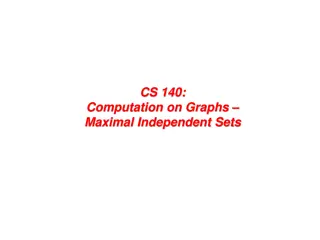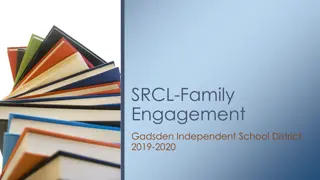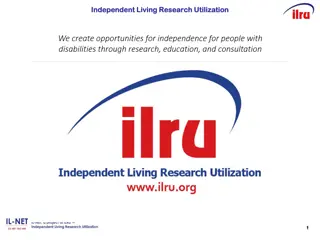Crane Independent School District Initial Assessment
This content discusses the three fundamental legal principles governing the redistricting process: one person-one vote, non-discrimination standard of the Voting Rights Act, and limitations on race usage in redistricting, along with insights on initial assessment, census geography, and prohibited purposes or effects in redistricting.
Download Presentation

Please find below an Image/Link to download the presentation.
The content on the website is provided AS IS for your information and personal use only. It may not be sold, licensed, or shared on other websites without obtaining consent from the author.If you encounter any issues during the download, it is possible that the publisher has removed the file from their server.
You are allowed to download the files provided on this website for personal or commercial use, subject to the condition that they are used lawfully. All files are the property of their respective owners.
The content on the website is provided AS IS for your information and personal use only. It may not be sold, licensed, or shared on other websites without obtaining consent from the author.
E N D
Presentation Transcript
Crane Independent School District Initial Assessment Sara Leon & Associates, PLLC In collaboration with Jeremy McMahen
There are three basic legal principles that govern the redistricting process: What Legal Principles Govern the Redistricting Process? 1. The one person-one vote (equal population) principle; 2. The non-discrimination standard of Section 2 of the Voting Rights Act; 3. The Shaw v. Reno and equal protection limitations on the use of race as a factor in redistricting.
One person-one vote The one person-one vote requirement of the United States Constitution requires that members of an elected body be drawn from districts of substantially equal population. Redistricting strives to create districts that have a total population deviation of no more than 10 percent between their most and least heavily populated districts. o Total maximum deviation the 10 percent deviation o Ideal (or target) population the population that an ideal sized district would have for a given jurisdiction. Numerically, the ideal size is calculated by dividing the total population of the political subdivision by the number of elected positions
Initial Assessment According to 2020 census, each of Crane ISD s seven single member districts has an ideal population size of 935 persons. o District 4 is the largest district, with 1,006 persons o District 3 is the smallest district with 778 persons The total deviation of population among the largest and smallest of the five single member districts is 24.38%, well in excess of 10%, the maximum deviation permitted. Redistricting of trustee districts is necessary to conform with the one person, one vote principle of the United States Constitution.
Census Geography The single member population data are themselves derived from population data based on smaller geographical units. The Census Bureau divides geography into much smaller units called census blocks. In urban areas, these correspond roughly to city blocks. In rural areas, census blocks may be quite large. Census blocks are also aggregated into larger sets called voting tabulation districts or VTDs which often correspond to county election precincts.
Prohibited Purpose or Effect A reviewing court may consider as relevant factors: The extent to which malapportioned districts deny or abridge the right to vote of minority citizens; The extent to which minority voting strength is reduced by the proposed redistricting; The extent to which minority communities are fragmented among different districts ( cracking ); The extent to which minority communities are over concentrated in one or more districts ( packing );
Principles Guide to the Redistricting Process Race may be considered; Race may not be the predominant factor in the redistricting process to the subordination of traditional redistricting principles; Bizarrely shaped districts are not unconstitutional per se, but the bizarre shape may be evidence that race was the predominant consideration in the redistricting process; If race is the predominant consideration, the plan may still be constitutional if it is narrowly tailored to address compelling governmental interest such as compliance with the Voting Rights Act; and If a plan is narrowly tailored, it will use race no more than is necessary to address the compelling governmental interest.
Adoption of Redistricting Criteria Adoption of appropriate redistricting criteria B and adherence to them during the redistricting process B is potentially critical to the ultimate defensibility of an adopted redistricting plan. Traditional redistricting criteria that the school board may wish to consider adopting: o Use of identifiable geographic boundaries o Maintaining communities of interest o Using whole voting precincts, where possible and feasible; o Basing the new plan on existing districts; o Adopting districts of approximately equal size; o Drawing districts that are compact and contiguous; o Keeping existing trustees in their districts; and o Narrow tailoring the plan to comply with the Voting Rights Act
Timeline? Adopt Plan by Board Public Hearing(s) Workshop(s) 2/4/2022























